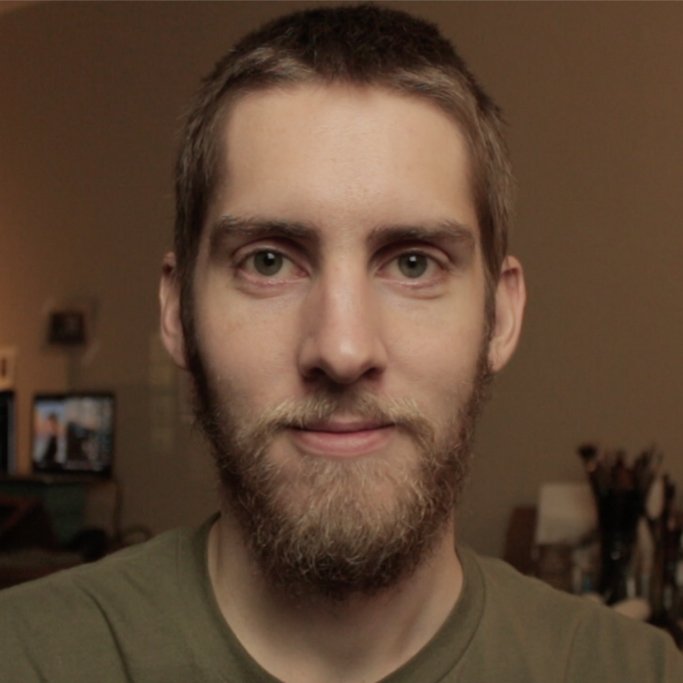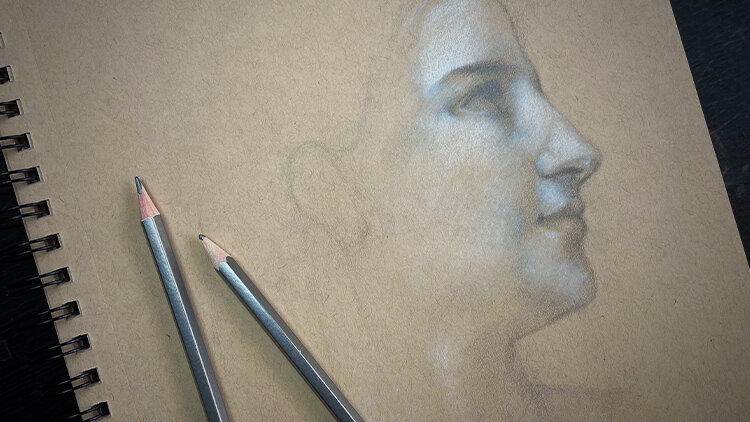I Made 58 Paintings in One Month - What I Learned
This month was a month full of focus and painting for me. I somehow created 58 paintings - almost 2 per day, while still working a day job. I’ll share what I learned, my process, experiments, and results for this month of focused painting.
All of these paintings are inspired by places I’ve traveled to or people in my life. Having inspirations like this allows me to connect on a deeper level to my work. Painting these places and people brings me a sense of peace and I’m happy I get to share it with you.
Preparation & Planning
With a large majority of the 58 paintings I created, I began planning out the compositions in a small sketchbook. Sometimes I did value studies. Sometimes it was small thumbnail sketches and moving elements of the scene around. Sometimes I played around with color to better figure things out.
I found this planning stage to be incredibly beneficial to my paintings overall. It's something I'm definitely going keep as a part of my process moving forward.
Another cool thing about this stage is that, some days when I wasn't able to paint at all (due to my day job work, etc.), I could at least spend 10-15 minutes in the evening planning out future paintings in my sketchbook.
I still have some sketches that I haven't even attempted to turn into paintings yet, so I'm excited to do those soon and create more paintings in the near future as well.
Experiments
After focusing only on painting for 1 month, I began to experiment a little.
Materials:
I tried both Arches Rough paper and Aches Cold-Press paper. I like the texture of the rough paper most of the time and I think I prefer it over the cold-press for now. But the cold-press does seem to be better for some subjects like figures. I still need to keep exploring materials as time goes on.
I also began using my watercolors more opaquely when needed. This was usually to fix certain areas or to enhance them too. I found adding bright, yellow-green leaves opaquely was much easier than doing negative painting to create the leaves. I actually enjoy this opaque effect more and I find it just looks more natural. Opaque white highlights were always helpful too when necessary.
Process:
As the month went on, something I found myself doing daily was laying out all the finished paintings next to each other on the floor. I could then easily compare the paintings and see which paintings just weren't that great and which ones were. Sometimes I'd work on them a bit and add small things here and there.
Some paintings weren't finished until 1-2 weeks after the initial painting session where I thought I had finished them already. Over time I realized I'd come up with small ideas which enhanced the paintings (I think so, anyway haha).
Something else I'm open to doing now is painting a scene multiple times until I get a satisfactory result. I did this with one of the first paintings and it ended up being one of my favorites from all I've done so far.
Process Example
Let me show you how I played around with a composition and did my best to figure out how to make it into a successful painting.
I first used a photo which I took during a trip to Malaysia.
After that, I began sketching out ideas in my sketchbook using thumbnail sketches, value studies, and planning out more final compositions, potentially.
Next, I did some small study paintings in watercolor sketchbooks to see if it might work as a painting. I was able to play around a bit with colors and also alter some main elements like the house, foreground shadow, and telephone pole.
Then, I decided to try doing a painting in the size which I desired it to be, which currently is 1/8th sheet of watercolor paper - 7.5” x 11” (19cm x 28cm). I was somewhat happy with this painting but part of me felt that it was missing something which I wanted to express.
So I decided to rethink it a bit and try again.
I zoomed the entire scene in, which enlarged the trees and other distant elements. Cropped off more of the house on the right. After painting both of these, I let them sit around for quite a while - all month actually while I painted other things.
Almost every day, I would take out all the paintings I had done this month so far, and lay them out next to each other on the floor. This would allow me to see all the paintings together and I could easily assess them (as I mentioned and showed earlier). Which paintings were great and which were garbage. It was quite clear usually.
But as the month went on, I kept looking at all my paintings every day. Eventually, I’d see something I didn’t see before. Something to improve, change, or add to the paintings.
For this painting in particular, I added a light in one of the windows - this brought more life to the painting.
Another day I added 2 chickens, one in the foreground and a small one in the middle ground (I actually saw chickens running around the neighborhood when I visited which inspired this decision).
(see below)
And lastly, many days later I added the fence posts to the left which help to bring a little more attention to that side and balance out the pole on the right. They also help to lead your eye into the painting a bit more as well.
All of these little inspired decisions happened over the course of the month, after I thought I had already finished the piece. I’m still not exactly 100% happy with it but it’s quite close to perfect to me for now.
In the future, I may try painting this scene on a 1/4th size sheet and play around with the idea of adding a human figure or two. And also maybe bring in more sky and the background hills and mountains (as I initially wanted and planned on).
Great or Garbage?
So in all, I made 58 paintings in one month. Let’s break down what that actually means.
36 Great paintings
22 Garbage paintings
I began looking at my paintings as either "great" or "garbage". If I didn't think it was great, I'd ask myself a few questions like: "Can I improve this painting? Is there anything I can change or add?"
If there was, then I’d try to change and improve the painting. And many times I did add things to my paintings, even many days later. I really took my time with most of the paintings and slowly improved and added things over many days when needed.
But, if there was nothing I could do to save it, then it was simply a garbage painting. And those were lessons to learn from. (I didn’t actually throw them away yet, but I put them all in their own pile).
I realized there were usually only a few reasons why the painting wasn't great:
Lack of preparation and planning (thumbnail sketches, value studies, etc.)
Bad composition (due to lack of planning usually, haha lazy 😭)
Mediocre execution (the actual painting process)
These few reasons pretty much summed up all my less-than-great efforts.
Eventually, I’d like to revisit most of these “garbage” paintings and spend more time in the planning stages and repaint them again. Sometimes one attempt at a painting just isn’t enough. I’ll explore this idea and concept more in the future for sure.
Reflections
What do you think about this process?
I’m surprised that I was able to create this many paintings in one month. I wasn’t exactly trying to do as many as I could. I just did my best to enjoy painting whenever I had free time.
I noticed that towards the end of the month, I just wanted to get to the painting process and do paintings. Which meant I spent less time planning out the compositions, and many of my paintings suffered because of this.
I do think quantity is important, especially if you’re a beginner and in the early stages of learning. It had been many months since I’d done any painting before this, so I felt the need to do a large quantity like this.
But moving forward, I might slow down a bit more and spend more time on planning and on quality of my paintings, rather than just outputting quantity.
The most important thing of all is to simply enjoy the process of creating. Remember why you started and use that as a driving force to keep you going.

I am an artist, writer, and instructor. As a previous graphic designer for a healthcare management business, I now teach drawing, painting, and discovering your passion with art.
When You’re Ready, Here’s How I Can Help You:

Unlock your artistic potential and learn to draw with confidence using the Intuitive Drawing method. From your first sketch to creating realistic drawings and subjects.












